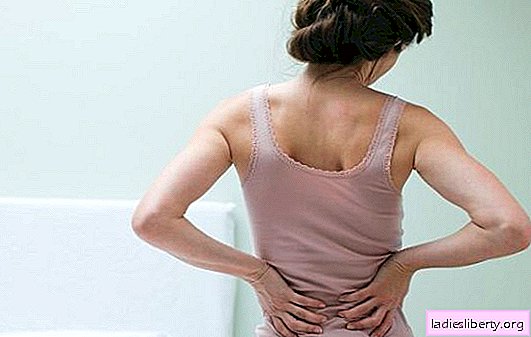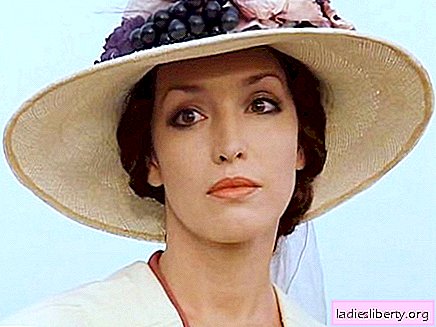
The rhythm of life of our contemporary has become too measured: most of the time, a 21st-century person is engaged in mental work, which means that he sits more than moves.
A sedentary lifestyle, like the other extreme, equally negatively affects the spine. All this can lead to the development of such a serious disease as an intervertebral hernia (it is a hernia of the spine).
Many people have small hernias, but often they themselves do not suspect a problem.
Meanwhile, this pathology is dangerous for its complications: at the developed stages, paresis and paralysis of the limbs are quite possible. In order to prevent irreparable consequences, you need to know well what constitutes a hernia of the spine.
Spinal hernia: causes
The mechanism of development of the intervertebral hernia is well known. Between the vertebrae there are special elastic structures of soft tissues - intervertebral discs. They act as shock absorbers when walking. With increasing pressure inside the disk, its outer shell does not withstand and bursts, bringing the contents out, outside the spine. In this case, it is possible to go outside the spine both outside and inside (in this case, compression of the spinal cord occurs) and even stretching into the lumen of the spinal canal. What are the immediate causes of hernia of the spine?
• Excessively intense physical activity. Single, but too intense physical exertion can lead to increased pressure in the disk and its rupture.
• Long exhausting physical activities. In this case, the culprit is the wear of the vertebrae and muscles.
• Defects in connective tissue. Congenital and acquired connective tissue defects can cause a hernia of the spine.
• Taking drugs. The use of hormonal drugs (especially corticosteroids) causes softening of the tissues and leads to degenerative processes.
• Sedentary lifestyle. Hypodynamia, a constant presence in the same position weakens the muscles and leads to dystrophic processes in the spine.
• Previous injuries.
• Concomitant diseases that destroy the spine (such as osteochondrosis, etc.).
Thus, there are many reasons, and all of them can be eliminated by the person himself as part of prevention.
Spinal hernia: the first symptoms
Signs of a hernia of the spine largely depend on its location. There are several possible locations in the spine: in the cervical region, in the thoracic region, or in the lumbosacral region of the spine.
The first symptoms of a hernia of the spine in the cervical region are as follows:
• Pain in the neck at the level of localization of the hernia. Pulling pains, give in hands. The intensity of pain depends on many factors, including the size of the hernia. As a rule, in the advanced stages of the disease, the pain is severe, severe and the patient can not do without analgesics.
• Pain in the hands. Depending on the specific place where the hernia is located, the shoulder, forearm, and fingers may hurt. The reason lies in the pinched nerve roots.
• Feeling of numbness of limbs. Feeling of numbness, tingling and "goosebumps" is a bad sign, also indicating pinching of the roots of nerves or even damage to the spinal cord. Sensitivity decreases, the risk of complications increases.
• Disorders of motor activity of the upper limbs. A person cannot fully control his limbs.
The most terrible complication of hernias of this localization remains quadriplegia - paralysis of all four limbs. Fortunately, it is not found so often and almost always after serious injuries.
For a hernia located in the thoracic region, are characteristic:
• Pain in the chest. Pain, as in the case of hernias of the neck, pulling, aching. However, the symptom is nonspecific. The same pain can be with problems with the stomach, heart, lungs, etc. Therefore, the doctor must conduct a differential diagnosis.
• Numbness of the hands, discomfort in the shoulders are observed.
• In case of a serious defeat, organ problems may develop, including sudden cardiac arrest, tachycardia (palpitations), bradycardia, fecal and urinary incontinence, etc. These are serious and threatening manifestations that testify to the complex process and the need for urgent treatment.
In severe cases, paralysis of one or both legs is possible.
The signs of a hernia of the spine in the lumbosacral are as follows:
• Pain in the lumbar region (in the same way, pulling, aching, give to the leg from the side of the lesion, the pain can go all the way to the foot).
• Numbness of the legs.
• Problems urinating and defecating.
In all cases, the symptoms will be their own. Because each situation is unique.
Diagnosis of a hernia of the spine
Diagnosis begins in the doctor’s office. But first you need to decide which specialist to contact. Three doctors are immediately involved in spinal problems: an orthopedist, a neurosurgeon, and a neurologist. First of all, you should contact a neurologist, he will help determine the next steps.
The first thing that the doctor will do is to interview the patient, clarify the nature of the complaints, their prescription, possible causes of the problem. This is called a medical history.
The next step is physical research. It must be carried out with caution, since it is impossible to correct the hernia. Its essence lies in palpation of the affected area of the spine to assess pain reactions.
Functional tests provide an opportunity to assess the extent of the process.
The next stage is the turn of instrumental research. They will help put an end to the question of diagnosis. Among them:
• Radiography. Allows you to evaluate the initial cause of the appearance of a hernia, as well as the condition of the bone structures of the vertebrae.
• MRI / CT diagnostics. The most informative study, since it provides an opportunity to evaluate in detail both soft tissues and bone structures of the spine.
Laboratory methods are practically not used due to their low information content.
Spinal hernia treatment
Treatment for a hernia of the spine should begin as soon as the first symptoms appear. In the field of therapy, doctors use two methods: surgical and conservative. The surgical method (it is also operational) involves an operation to remove a damaged disk. The patient should keep in mind. This is a radical method, and if the doctor at the first appointment advises the operation to a person who has reached it on his own, this is an occasion to think about changing the treating specialist. In recent years, minimally invasive operations have been developing: laser and others. They allow you to achieve a high percentage of cure without damage and unnecessary complications. In any case, everything should begin with conservative therapy (we are not talking about severe cases).
In conservative treatment, the use of medications of the following groups is of paramount importance:
• Analgesics. For relief of a pain syndrome.
• Antispasmodics.
• Anti-inflammatory drugs.
• Chondroprotectors. For significant inhibition of destructive processes.
In the future, at the end of the acute period, exercise therapy and physiotherapy are prescribed. All drugs and methods for the treatment of hernia of the spine are prescribed only by a doctor. Self-medication is unacceptable.
Spinal hernia prophylaxis
There are fairly simple methods for preventing hernia of the spine. All you need is to adhere to simple recommendations:
• Observe physical activity. In no case should "work for wear". Moderate loads are useful for the spine, nothing more. Also, do not spend the whole day in one position. Once an hour and a half it is recommended to get up and do a light workout.
• In time to treat all concomitant diseases, especially such “promising” ones as osteochondrosis.
• Do not make sudden movements. This is fraught with the rapid formation of a hernia.
Adhering to these rules, it is easy to prevent the development of a vertebral hernia.
Intervertebral hernias can occur in any person at any age. A large role is played by lifestyle. Be that as it may, a hernia of the spine is always fraught with the development of complications, therefore it is not recommended to delay a visit to the doctor and the start of treatment.











